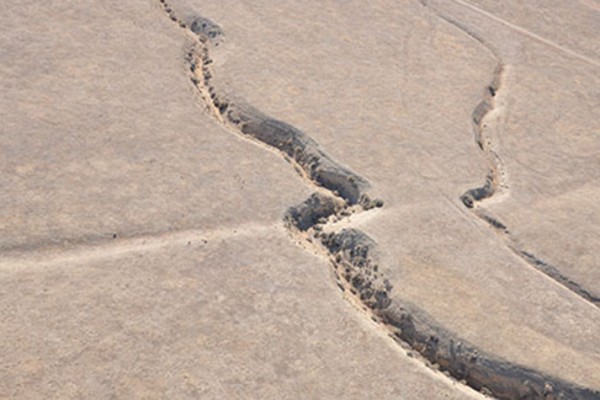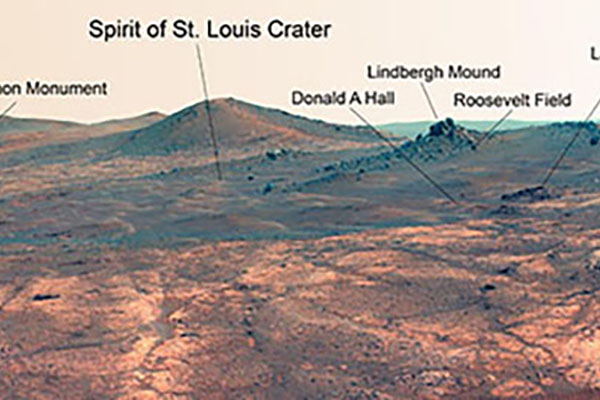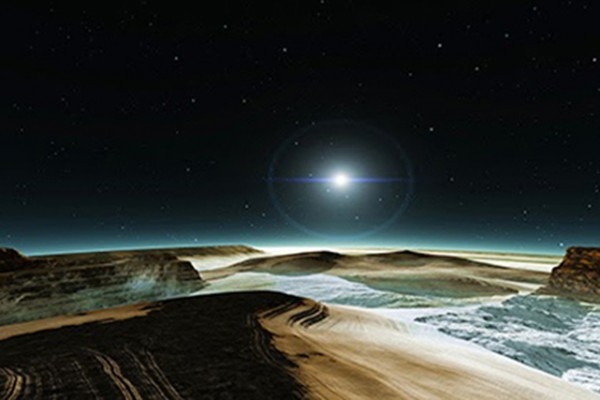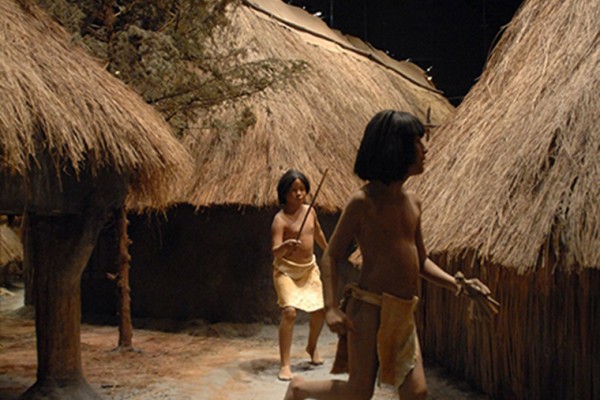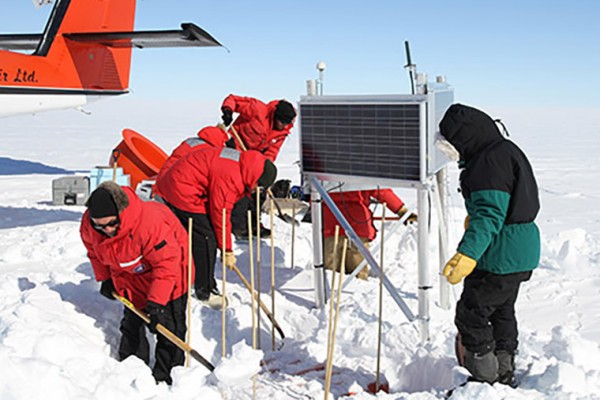WashU seismologist who loves disaster movies reviews ‘San Andreas’
A Washington University earthquake seismologist who is teaching a course on natural disasters in movies reviews the newly released film “San Andreas.” The short version: they clearly didn’t have a seismologist consulting on this film. The take home message: Go see it anyway. It’s summer.
Their classroom is the desert
The hallmark of the 18-month Pathfinder Program in Environmental Sustainability at Washington University in St. Louis is the field trips to ecosystems, such as the Mojave Desert, that give students the chance to see and touch the land they have been studying. It’s hard to get the students back in the van, says Ray Arvidson, who leads the program.
Spirit of St. Louis on Mars
The Opportunity rover is currently exploring a Martian crater named the Spirit of St. Louis, after the famous aircraft — which was in turn named in honor of St. Louis citizens who purchased it for Charles Lindbergh. The mission team picked this naming scheme because Washington University team members spotted a promising target just beyond the crater. As long as the rover remains in the crater, the names will drawn from a list of names related to the famous flight.
Coming soon: First encounter with a new class of worlds
After an epic journey across the breadth of the solar system, the New
Horizons spacecraft is finally nearing its destination: the Pluto system, a staggering three billion miles from Earth. William McKinnon, a planetary scientist at Washington University in St. Louis, explains that our understanding of Pluto has been transformed in the nearly 10 years the probe has been en route to its target.
Rocks that glow in the dark
There’s a small room in Rudolph Hall that most students walk right past
without noticing. But when anyone finds it, they usually insist all
their friends come and look as well. It’s one of those special things about the university no student ever forgets, and this is the story of how it came to be there.
As the river rises: Cahokia’s emergence and decline linked to Mississippi River flooding
Sediment cores from two lakes in the Mississippi floodplain show that Cahokia, the largest prehistoric settlement in the Americas north of Mexico, emerged during a period when there were few severe floods on the river and that its decline and abandonment coincided with the return of large floods.
Research as art
An inaugural exhibit of images by scientists, titled “Research as Art,” held April 3, included eerie landscapes created by vortices in superfluids, smeared false-color data from satellite-borne instruments, three-dimensional images of grains that exploded out of supernovas and many more enigmatic and colorful images.
Forty-year-old Apollo 17 samples help date lunar impacts
It’s been more than 40 years since astronauts returned
the last Apollo samples from the moon, and since then those samples have
undergone some of the most extensive and comprehensive analysis of any
geological collection. A team of scientists has now
refined the timeline of meteorite impacts on the moon through a
pioneering application of laser microprobe technology to Apollo 17
samples.
To speed up magma, add water
A three-dimensional seismic image of the mantle beneath the
Lau Basin in the South Pacific just published in Nature has an intriguing anomaly. The image showed the least magma where the scientists expected to find the most. After considerable debate, they concluded that magma with a high water content was flushed so rapidly that it wasn’t showing up in the images.
2010 Chilean earthquake triggered icequakes in Antarctica
In March 2010, the ice sheets in Antarctica vibrated a bit more than usual as a surface wave from an 8.8-magnitude earthquake in Chile 3,000 kilometers away passed through the ice. Powerful earthquakes were known to trigger secondary quakes along faults in land; this was the first observation of triggered quakes in the ice. Washington University in St. Louis seismologist Doug Wiens says the finding is one of several discoveries made possible by POLENET, an array of seismic stations that reaches for the first time into the interior of Antarctica.
View More Stories
